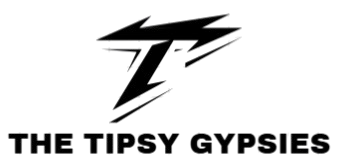With the rise of AI writing tools like ChatGPT, GPT-4, and other large language models, the ability to create coherent, fluent, and lengthy content in seconds has become more accessible than ever. But this convenience has also sparked concerns over the authenticity of content. Is that email from a colleague or generated by a bot? Did a student write their essay, or was it crafted by AI?
This is where tools like CudekAI step in, providing users a powerful way to check on AI and verify the origin of written content. Whether you’re an educator, employer, journalist, or content creator, CudekAI helps ensure that the words you’re reading came from a human mind—and not just a machine.
Why You Need to Check on AI Content
AI-generated text is everywhere—from social media posts and blog articles to customer support replies and student submissions. While these tools are beneficial, they raise important questions:
- Can we trust the authenticity of what we read?
- Are people passing off AI content as their own?
- Is AI being used ethically and transparently?
That’s why the concept of check on AI(перевірка на ші) is gaining traction globally. The ability to detect AI-written text has become crucial for maintaining trust, transparency, and credibility in the digital world.
What Is CudekAI?
CudekAI is a dedicated AI content detector designed to help users distinguish between human-written and AI-generated text. It scans written content and provides a probability-based result indicating how likely the text was created by an AI model.
Unlike many AI detectors that are limited in scope or hidden behind paywalls, CudekAI offers a user-friendly and accessible platform for anyone who wants quick, reliable results.
Key Features of CudekAI
- Detection Score: Provides a percentage-based assessment of how likely the content is AI-generated.
- Multilingual Support: Works across various languages, not just English.
- No Signup Required: Accessible and easy to use without creating an account.
- Lightweight and Fast: Get your results in seconds, without technical complexity.
Who Should Use CudekAI?
1. Educators
Teachers and professors can use CudekAI to check whether essays or homework submissions were written with the help of AI. It helps maintain academic integrity and fairness in grading.
2. HR and Recruiters
Hiring managers can verify if cover letters, personal statements, or writing samples were written by the applicant or generated by a tool like ChatGPT.
3. Content Publishers
Blog editors, SEO writers, and journalists can ensure that published content is genuinely original and not auto-generated to game search engine algorithms.
4. Students and Professionals
Individuals can test their own content before submitting it, ensuring it won’t be flagged for AI usage and risking credibility.
How to Use CudekAI to Check on AI Content
Using CudekAI is simple:
- Copy the text you want to analyze.
- Paste it into CudekAI’s detection box.
- Click to analyze and receive a detection score within seconds.
- Interpret the results CudekAI will indicate whether the content is likely human-written or AI-generated.
The tool is designed for ease of use, so no technical skills are needed. It’s a practical, plug-and-play solution for anyone concerned with content authenticity.
How Accurate Is CudekAI?
CudekAI relies on trained algorithms that analyze sentence patterns, structure, vocabulary choices, and coherence to determine whether a human or AI generated the text. While no tool can offer 100% certainty, CudekAI maintains a high degree of accuracy across various writing styles and tones.
It’s particularly effective when checking longer paragraphs or full documents, where it has more data points to analyze. This makes it a reliable solution for educational institutions and professional environments.
Ethical Considerations in AI Detection
Detecting AI-generated content shouldn’t be about punishing creativity. AI is a helpful tool, and many writers use it for idea generation, drafting outlines, or improving grammar. The goal of detection is to promote transparency, accountability, and proper attribution.
CudekAI supports this goal by offering a neutral and non-intrusive way to verify authorship. It’s not about saying “AI is bad”—it’s about knowing when and how it was used.
Limitations of Traditional AI Detectors
Many people rely on outdated or inaccurate tools that:
- Only support English
- Require payment or subscription
- Deliver vague or inconclusive results
- Lack support for regional languages and writing styles
CudekAI addresses these issues by offering an accurate, free-to-use tool that works well in a variety of use cases, making it ideal for global users who may want to check on AI(перевірка на ші) content in languages beyond English.
Why “Check on AI” Is Becoming a Standard Practice
In both academic and professional environments, verifying the origin of content is becoming a standard step. Just like we check for plagiarism or fact-check news articles, verifying whether something was generated by AI is now a part of digital literacy.
By integrating CudekAI into your workflow, you ensure:
- Fairness in evaluation
- Higher content authenticity
- Greater trust in the source of information
- Improved accountability across industries
This is particularly important for organizations that depend on originality—such as publishers, research institutions, and HR departments.
Final Thoughts
Artificial intelligence is here to stay, and so is AI-generated content. But with great power comes great responsibility. We must learn to balance the benefits of AI tools with the need for authenticity and ethical use.
CudekAI offers a practical and effective way to check on AI-generated content, giving individuals and organizations the confidence to trust what they read—and publish. Whether you’re reviewing a student essay, a job application, or a marketing blog post, CudekAI helps you stay informed and maintain integrity.
In a world where machines can mimic human language better than ever, knowing what’s real has never been more important.






